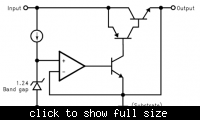very
Newbie level 5
I have designed many working circuits by using parallel regulator devices.
I would like to know why single high current regulators like LM1084 do not meet their specs of 5A. Poor regulation after 2A. I am using a large Transformer-Bridge Rectifier-Smoothing capacitor combination and NS suggested circuit. Huge heat sinks. LM317 appears to fare slightly better.
Thanks
I would like to know why single high current regulators like LM1084 do not meet their specs of 5A. Poor regulation after 2A. I am using a large Transformer-Bridge Rectifier-Smoothing capacitor combination and NS suggested circuit. Huge heat sinks. LM317 appears to fare slightly better.
Thanks

